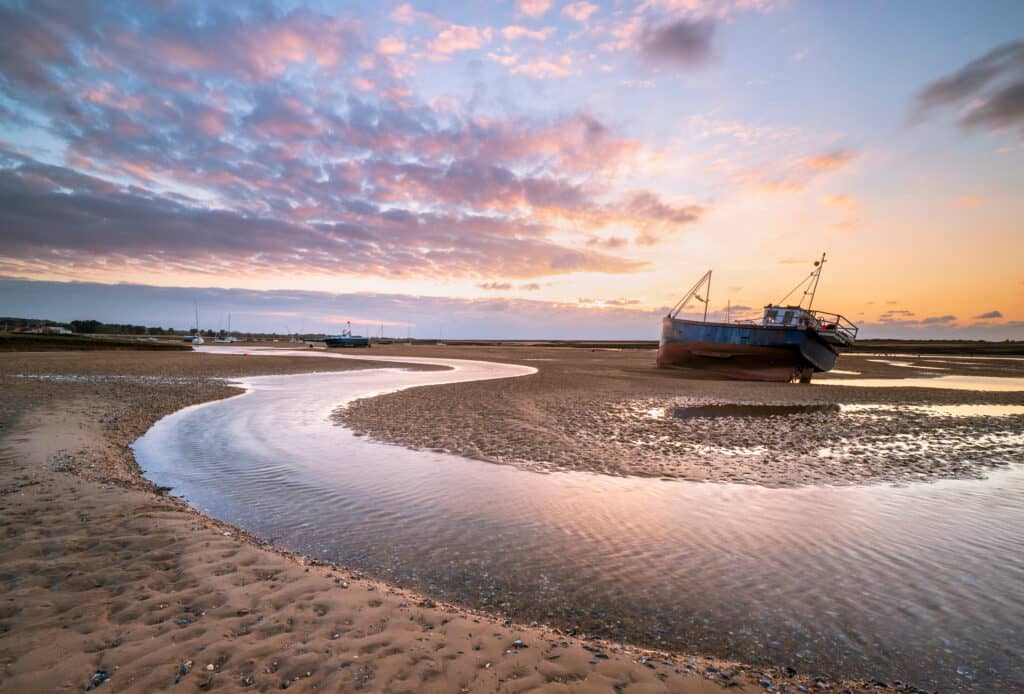
Shipwrecks and Salvage
1st September 1833. A gale blew up across the North Sea and English Channel. Hundreds lost their lives. Yet it’s the packet ship, Earl of Wemyss, en route from London to Edinburgh, which caught public imagination for the men’s failure to act with honour.
When the stricken vessel ran aground on a sandbank off Brancaster, the male passengers and crew got ashore, accommodated at the Ship Hotel. Tragically, the Captain sent eleven women and children to their berths but failed to batten down the hatches. Violent waves smashed through the skylights and filled the women’s cabin. All inside drowned.
A further indignity, the Lord of the Manor’s son-in-law, Joseph Newman Reeve, supervised the salvage efforts. When the dead bodies were laid out in St. Mary’s Church they had already been searched and clothes and valuables removed. Newman Reeve was put on trial at the Norwich assizes, charged with stealing property from the dead, but he was found ‘not guilty’, perhaps in part due to the belief that coastal residents were ‘the lawful heirs of all drowned persons’, entitled to keep property that came their way via others’ misfortune.
Two of the victims, Miss Susanna Roche and her nephew, four-year-old Alexander Roche, share a grave at St. Mary’s in Brancaster. The worn headstone laments ‘their persons were stripped of every valuable and their property plundered’. Just a short distance away is the grave of Joseph Newman Reeve.
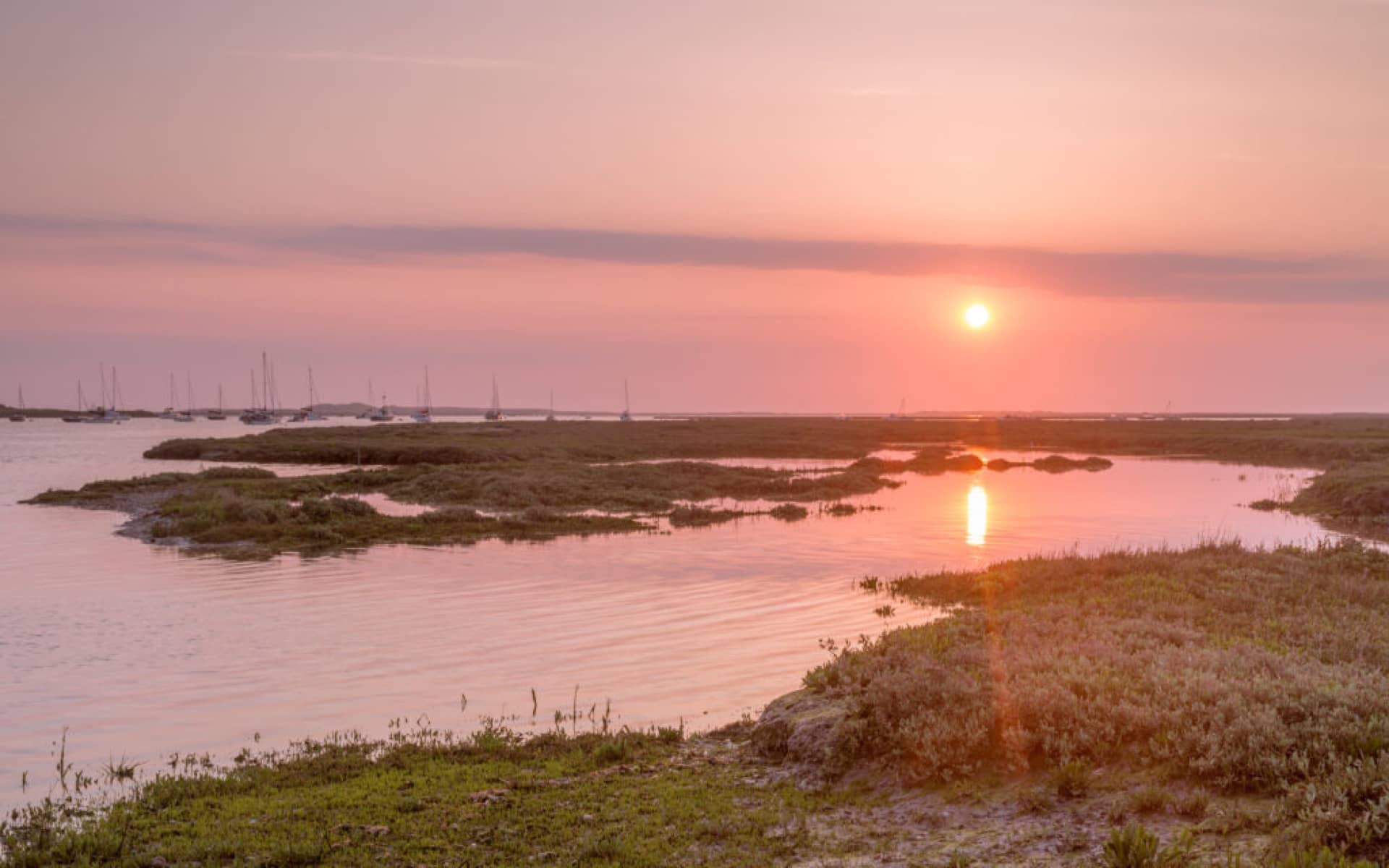
Ancient Origins
Walk the wind-scoured Norfolk coast when brooding winter skies break into breathtaking shafts of light. Buried deep beneath your feet are relics of an Empire in crisis. The 3rd century were dark days for Ancient Rome. Weakened by civil wars, Roman society was fracturing, riven by the violent deaths of short-lived emperors. The barbarians were at the gates. And in Britannia (Britain) they attacked from the sea.
Down the North Sea coast, and along estuaries on both sides of the Channel, was a chain of forts, built for trade shipping. Now they became strategic defences against raiders. Branodunum sat between Brancaster and Brancaster Staithe, one of Britain’s eleven Saxon Shore Forts, military garrisons for over 150 years as the ailing Roman Empire collapsed into history. Earthworks are all that remain. Once at the frontier of Roman Britain, Branodunum’s flints and stones were gradually stolen away and reused, still here embedded in this historic area’s architectural fabric.
The Bronze Age, Roman occupation, and the Saxon and Norman periods have all left their mark on the landscape around Brancaster Staithe. Saxon jewellery has been found here, and a mile to the south the small hill at Barrow Common is believed to be a Bronze Age burial mound. St Mary’s Church at Burnham Deepdale has Saxon origins, although the beautiful font is Norman. Depicting the ‘Twelve Labours of the Months’, it includes December feasting, so on that note…it’s time to head to a cosy country pub!
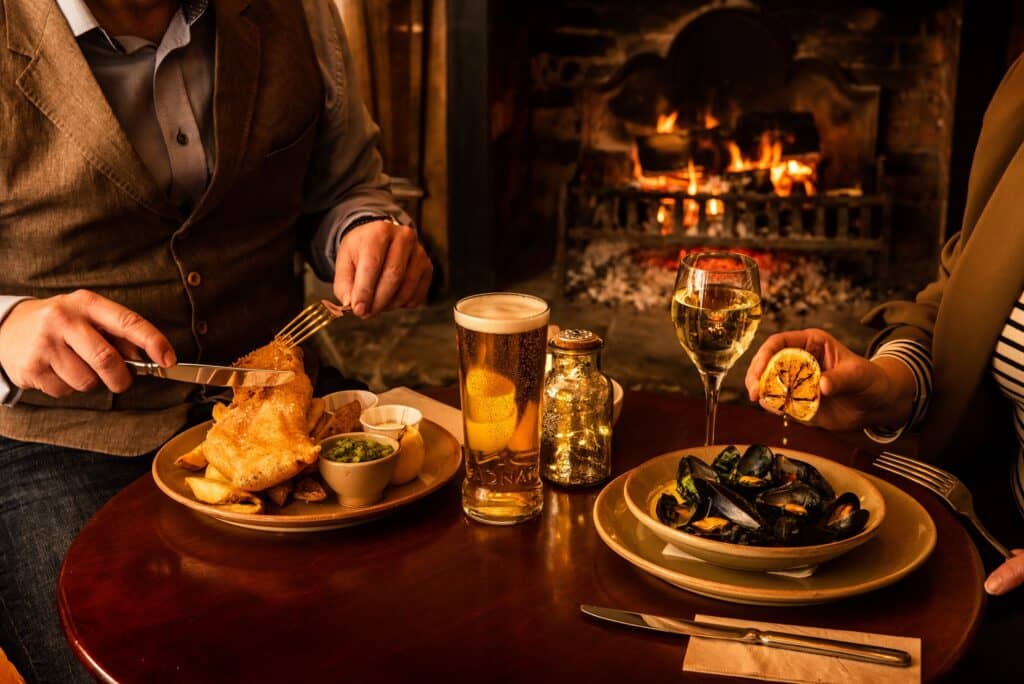
Brancaster Oysters & Mussels
Show us your mussels! Norfolk’s seafood is amongst the finest in Britain so buy local and tuck into some of the most nutritious delicacies around. The succulent mussel is a jewel in Norfolk’s culinary crown, sweet, chewy orange treasures sheathed in sleek blue-black shells.
Mussels are sustainably farmed, cultivated on ropes hanging from rafts where they plump up on plankton. Harvested only when mature, they filter sea water helping stabilise banks of sediment. This makes them environmentally benign, key to good sea-stewardship supporting marine ecosystems.
Seafood is part of a rich gastronomic heritage. Norfolk’s ancient Romans were big fans of a tasty mussel, evidenced by shells found during archaeological excavations at the 230AD fort of ‘Branodunum’, east of Brancaster. Centuries later, local fishermen still work the shallow creeks, willing ‘slaves to the tides’.
Here’s the science bit: this impressive shellfish boosts your brain and immune system. They’re anti-inflammatory and packed with zinc, vitamins and levels of folic acid and iron to rival red meat. Best of all, they’re inexpensive and ridiculously easy to prepare. If you fancy a super satisfying supper with a delectable ocean taste, companies like Brancaster Bay Shellfish sell fresh mussels for home cooking. Try switching a wine broth for one made with Norfolk beer. Delicious!
Or dine out! The Mussel Pod, The White Horse, The Jolly Sailors or Salthouse Dun Cow are just some of the fantastic Norfolk restaurants for seafood feasts. Prefer oysters? Family run Brancaster Oysters home deliver. Sorted!
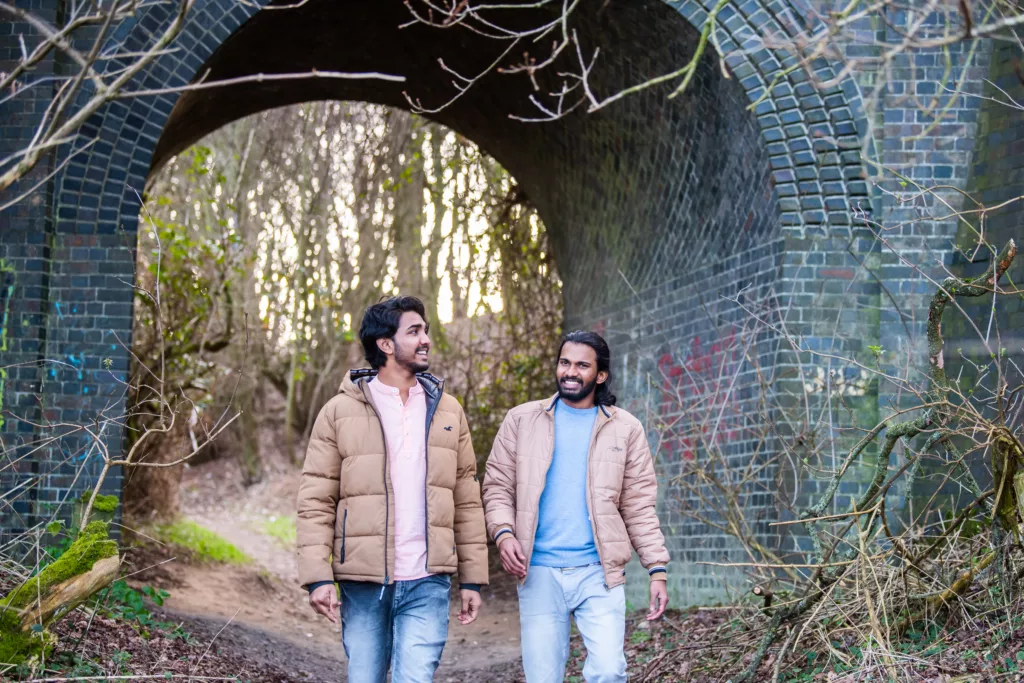
The Smugglers Brew
On a misty winter’s night there’s nothing so welcoming as the warm glow of pub windows, fires lit and merry laughter spilling from the door. Head to The Jolly Sailors at Brancaster Staithe for an evening supping Norfolk beers brewed by Norfolk people, rich in flavour and fireside stories. The Jolly Sailors brews small batches of top quality real ale from ingredients sourced nearby and named for local heritage. In winter, try ‘The Smuggler’, a strong stout named after…you guessed…a smuggler. Once landlord of this very pub, William Hotching had a lucrative, highly illegal side hustle.
His ‘crop’ of contraband tobacco and bootleg rum was hidden in a secret cellar at the Hat and Feathers, another of his inns. Pulled by his horse, Black Bess, the stash was transported on a cart under a mound of herring. Well, would you fancy searching through a pile of old fish after a few days on the road? Exactly.
Hotching was soon running goods across the Atlantic in ‘Harlequin’, his speedy clipper. Eventually the excise men arrested Brancaster’s buccaneering free trader in Boston in 1865, nearly a century after the revolutionary Tea Party.
Not keen on stout? Try a refreshingly tangy ‘Sharpie’, named after a traditional Norfolk sailing boat or ‘The Wreck’ an aromatic old English Ale made with malted Maris Otter barley from Wells-next-the-sea. It’s named after the old merchant navy vessel, SS Vina, whose lonely wreck is visible on the Brancaster shoreline at low tide.
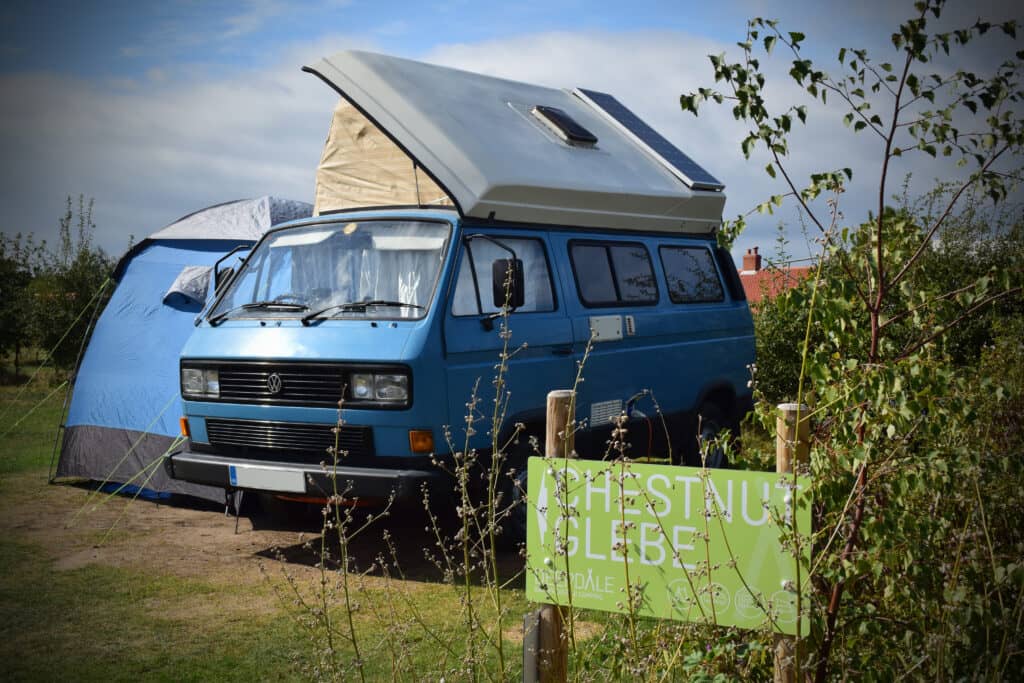
Deepdale Organic Farm Camping & Rooms
Burnham Deepdale is stunning in every season. Geese call in the pink glow of winter evenings. Salt marsh reeds whisper on a fine spring morning. Autumn leaves twirl like dancers in golden woodland glades. And all year the stars’ brilliance is truly awe-inspiring. Wild creatures are busy everywhere, yet few people are here to witness them in the year’s quiet times. Areas of Outstanding Natural Beauty aren’t always renowned for budget holidays but you can find low cost stays on the magical North Norfolk Coast. Deepdale Farm gets it right, perfect for exploring the Norfolk Coast Path and hugely popular with kite surfers, bird watchers, walkers, cyclists and all outdoor enthusiasts. It’s also home to atmospheric open air theatre, music festivals, conservation volunteering days on the regenerative organic farm, rural skills courses and more.
Open all year, including Christmas and New Year, the hostel rooms are restored 17th century barns, around a partially covered old stable courtyard, perfect for autumn barbeques and 100% of the electricity is generated from renewable sources. There’s a campsite too, for romantic stargazers. Next door, Deepdale Café, serves fantastic breakfasts and at Dalegate Market there are shops, a supermarket and pop-ups changing weekly. Two lovely pubs, The Jolly Sailors and The White Horse, are an easy stroll up the road after an evening of local beers and superb seafood. The hostel is accessible by local Coasthopper bus plus there are hire bikes on site, so you can savour this beautiful coast car-free.

Private: Ancient Barrows and Dark Skies
Barrow Common is a nature-rich County Wildlife Site and there’s a long human history here too. The remains of an ancient mound and round barrow mean you walk in the footsteps of the ancestors. And as a designated Dark Sky site, you can look even further back, into deep time and the ancient cosmos. Barrow Common is classed as a ‘Milky Way Plus’ site, meaning there’s the potential for breathtaking views of the stars on clear nights. The local astronomy club has fantastic telescopes, so check out their website to find regular open public events at Barrow Common and around West Norfolk.
Predominantly acid grassland the rolling Common is edged by woodland, part of a mosaic of natural habitats. From high on the ridge there are dramatic views over a patchwork of natural coastal habitats out towards the sea. This strategic vantage point was well used in less peaceful times. In 1940 a Second World War radar station was built facing the sea, installed with a ‘bedstead’ aerial mounted on the roof, intended to detect suspicious low flying aircraft up to 35 miles across the North Sea. The lookout was manned until 1944, after which it was closed, but can still be seen on the north-west side of the site.
A good starting point for a winter walk is Brancaster where the Jolly Sailor and the White Horse are two excellent foodie pubs to fuel up before your adventure or to settle in for a cosy evening afterwards.

Green Woodworking Courses
Discover the traditional country skill of green woodworking with rural crafter Richard Rood. The cosy days of autumn and winter are a great time to take up new hobbies, especially when you’re learning in a beautiful old brick barn up near the North Norfolk coast. If you’re a regular at Deepdale you might have chatted to Richard on his stall at Dalegate Market’s Popup Shops or seen him demonstrating woodworking skills at the Deepdale Spring Market. Now’s the chance to have a go for yourself, in a small friendly group of like-minded people, learning to make beautiful and useful things for your home.
Try a one-day introduction to green woodworking and, if you get a taste for it, there’s a two-day extension course for beginners to craft a lovely little stool. The range of wood working courses may well expand so feel free to get in touch and see what else could be arranged.
You’ll learn about the properties of wood and how to handle it while getting familiar with tools such as the draw knife and pole lathe. Richard will take you through the basics, starting with a log, using the draw knife to shape and prepare it, then moving on to the pole lathe to carve it into something useful. All tools are provided as are hot drinks throughout the day. So just bring a packed lunch and don’t forget to wear old clothes! To book have a look at the Deepdale website.

Deepdale Organic Farm Guided Walk
City, country or coast, wherever we live, we’re all connected by the land. Urgent conversations around global sustainability grow ever louder, affecting us all, within our communities and homes, and also impacting on our mental and physical health. A new generation of farmers is exploring solutions to problems our grandparents never imagined, mindful of managing both food production and ecological stewardship. Learn about our most vital industry on a guided walk round a working organic farm, led by a member of the Deepdale Farm team.
Find out about how the land works here under Norfolk skies and which crops and techniques are helping transform farming practices and soil fertility. See regenerative and organic farming in action and look at practical nature conservation suited to this wind scoured coast. Discover what’s being done to support hedgerows and woodland, so wildlife can thrive in and around farmland healing from past intensive use.
Covering about 3km, the walk takes around 1.5 to 2 hours. You’ll see parts of the farm not usually open to the public and find out how to get involved through conservation volunteering and other activities. Want to know more? Read ‘Rooted’ by Sarah Langford and ‘English Pastoral’ by James Rebanks, deeply moving true stories about farming, family and changing landscapes.
Walks take place on the first Thursday of each month. Come dressed for the weather, with decent walking footwear, as the route’s not always level and mud is a fact of farming life!
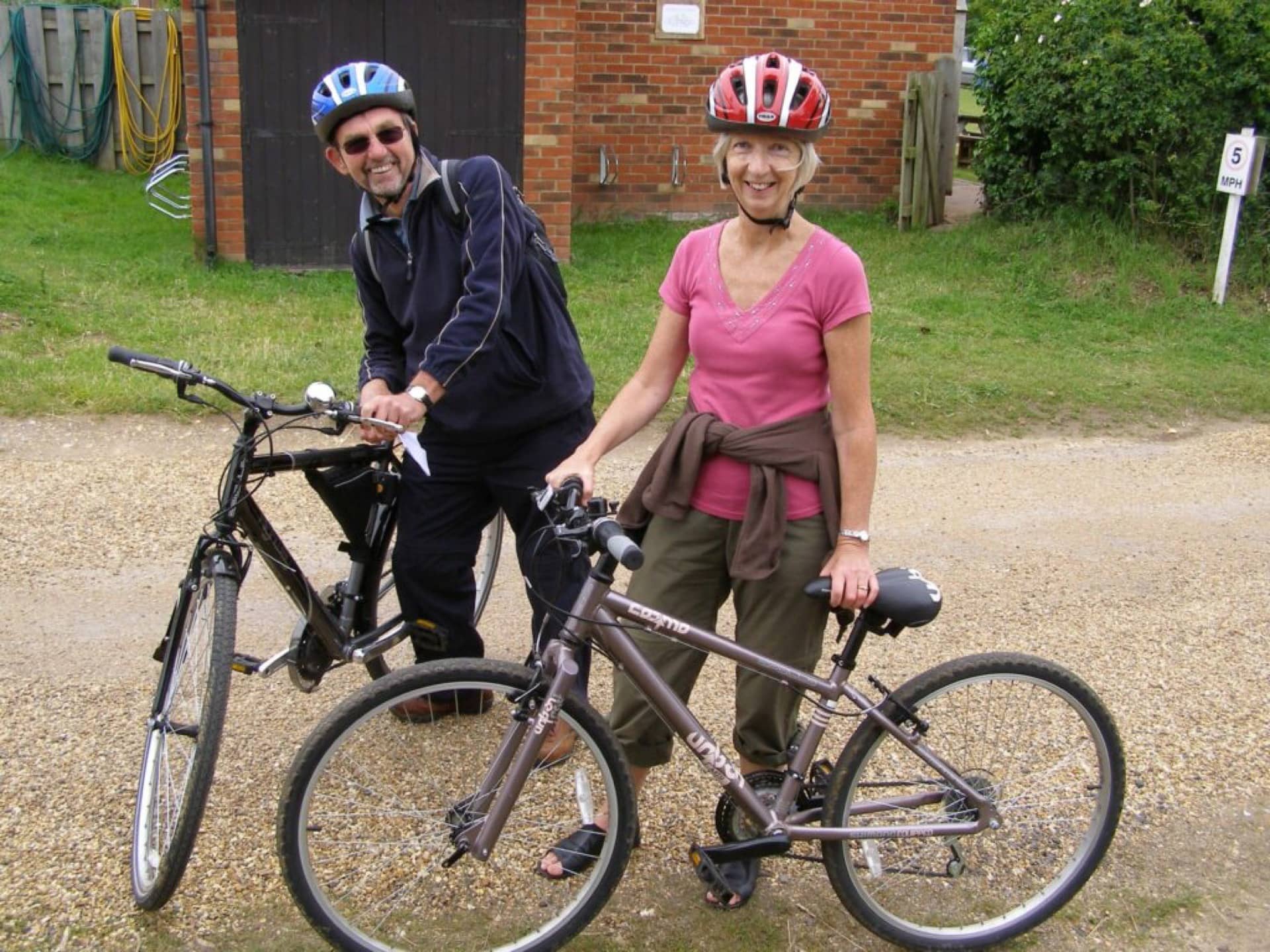
Deepdale Cycle Hire
Explore the atmospheric Norfolk coast by bike, cycling through unique landscapes in this Area of Outstanding Natural Beauty with a surprisingly radical past. Follow the ribbon of the road weaving round salt marsh, rivers and beach, past knapped flint cottages and ancient ruins, down winding lanes into pretty market towns and through majestic forests. Norfolk’s curves are gentle, but its history is fierce. You’ll be cycling the wake of warrior queens and rebel heroes. And there are plenty of great pubs and cafés to refresh your legs along the way!
The Bike Hire Centre at Deepdale Camping & Rooms has some of the best quality bicycles in North Norfolk. Located close to the National Cycle Network, it also has an award-winning campsite in walking distance of two nationally acclaimed pubs, The Jolly Sailors and The White Horse. And there’s a backpackers hostel open all year round, including Christmas and New Year. With easy access to the beautiful North Norfolk Coast and surrounding countryside, Burnham Deepdale the ideal base for getting acquainted with this unforgettable region.
Free route maps are available, as is plenty of excellent local knowledge! All bikes come with a strong lock, pump, repair kit and helmets. Hire rates are very competitive and flexible, with group rates and special offers for longer rentals. Deepdale is a supporter of Sustrans, which promotes of cycling across Norfolk.
A fun, healthy way to get out and about, cycling is ever more popular, so it’s definitely advisable to book in advance.
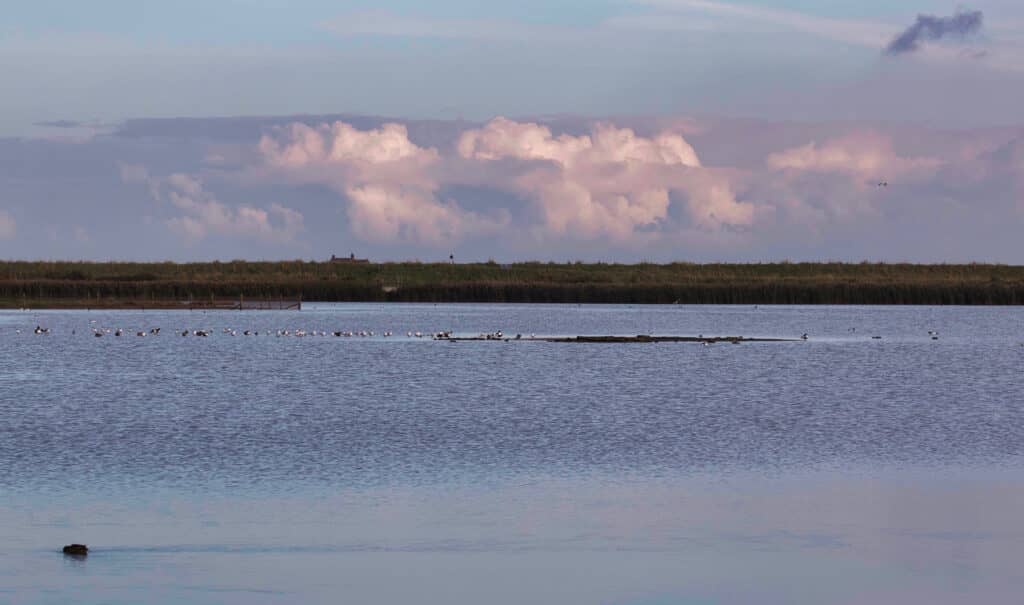
Guided Titchwell Experiences
All year round you’ll see something special at Titchwell but it is especially renowned for its wading birds, wildfowl and geese. These gather in epic numbers from mid-autumn onwards with the arrival of migrant birds from Scandinavia and Northern Europe. Explore this evocative landscape by booking onto one of the RSPB led experiences. There’s a range of options including seasonal exclusives and the possibility of arranging bespoke guided walks.
From woodlands to shoreline, this mosaic of varied habitats creates different homes for nature, all ecologically important for wildlife to thrive. Your guide will introduce you to many of the different bird and animal species that live at Titchwell or visit throughout the year. Listen for the bell-like ‘pting’ of bearded tits flitting amongst the vast reedbeds, look for delicate ebony and white avocets (the RSPB emblem bird) on the marsh and watch the spring skies for majestic marsh harriers sky dancing overhead. You’ll have a chance to stop and look for other key bird species too, without feeling overwhelmed.
This magical, liminal place where land and water merge into salt marsh was once farmland, learn about the history of these landscapes and discover how the RSPB is future proofing the reserve against the impact of climate and coastal change. Before saying goodbye, your friendly and knowledgeable guide will highlight other areas of the reserve for you to explore at your own pace. Come for a walk and stay all day, winter’s early sunsets are glorious!
Build your own itinerary
If you fancy creating your own itinerary for a day trip to Norfolk or a longer visit, it couldn’t be simpler. Just go to Search Activities and select from our wide range of free and paid-for experiences, saving any that capture your imagination with the click of a button.
Once you’ve finished, you’ll find all the information stored in My Favourite, where you can drag and drop activities to create your own day-by-day itinerary! You can download this to a calendar and even share it with friends.
